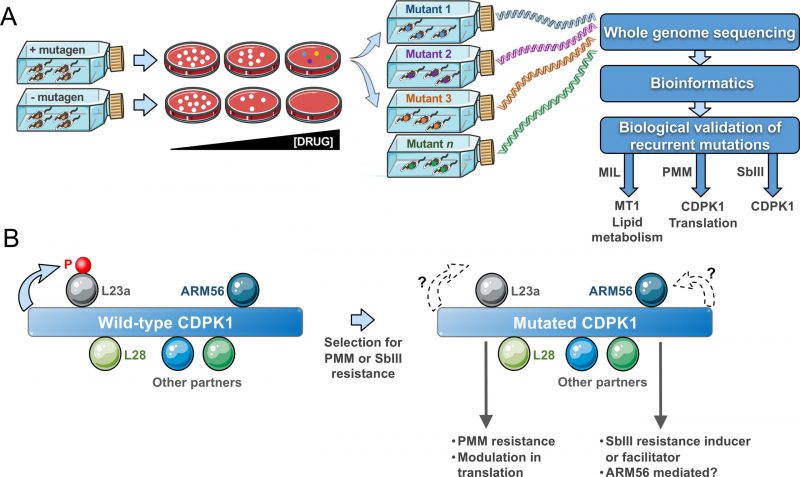Back to article: New insights in the mode of action of anti-leishmanial drugs by using chemical mutagenesis screens coupled to next-generation sequencing
FIGURE 1: A Mut-seq genomic screen highlights the role of the CDPK1 kinase in drug resistance. (A) Mut-seq strategy. Optimisation in mutagens concentrations, recovery time, and plating leads to drug resistant mutant cells. Clones are individually expanded and their DNA sequenced by next-generation sequencing. A bioinformatics pipeline allows the detection of SNVs and recurrent ones are tested experimentally (by transfection and/or gene editing). New genes were isolated using Mut-Seq after selection for miltefosine (MIL), paromomycin (PMM), or antimony (SbIII) resistance. (B) CDPK1. Interactome experiments indicated that many partners are potentially interacting with CDPK1. Reciprocal immunoprecipitations confirmed that the ribosomal proteins L23a and L28, and ARM56 a protein associated with SbIII resistance are interacting with CDPK1. L23a is phosphorylated by CDPK1. The Mut-seq screen after selection with either PMM or SbIII revealed that the CDPK1 gene is frequently mutated. Diverse mutations in CDPK1 were proven to lead to PMM resistance and to modulation in translation. It remains to be seen whether the phosphorylation, or lack of, of L23a is important for those phenotypes. CDPK1 mutations are closely associated with SbIII selection and future work will determine whether its association with ARM56 is necessary for this phenotype. Some of the graphical items in the figure were taken from the Servier Medical Art website and are used under the terms of the Creative Commons Attribution 3.0 Unported License.

